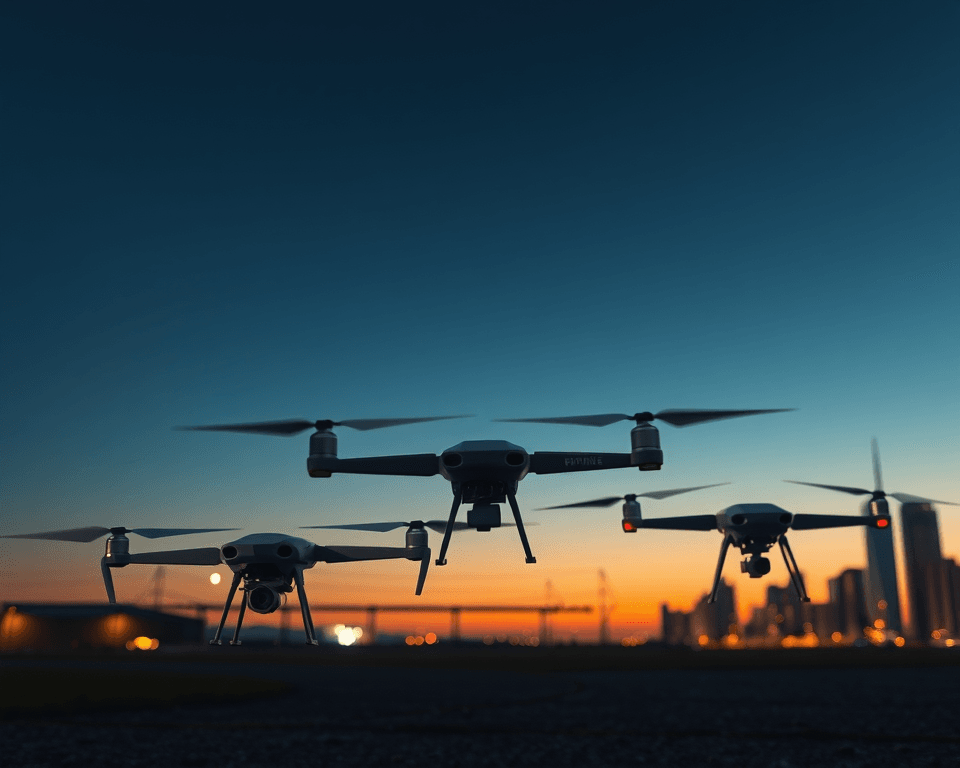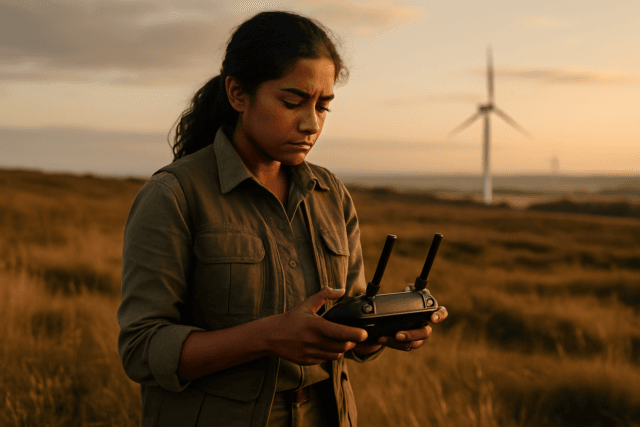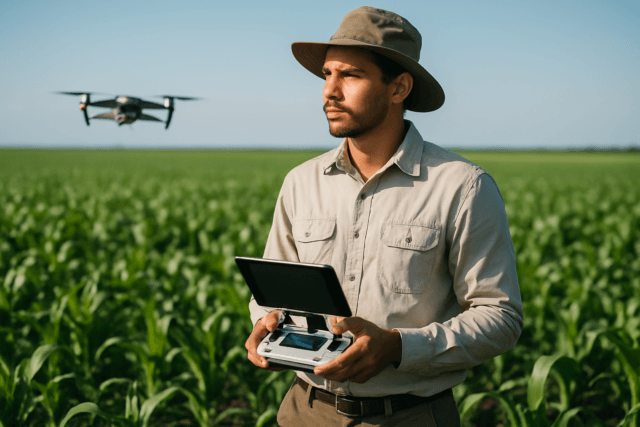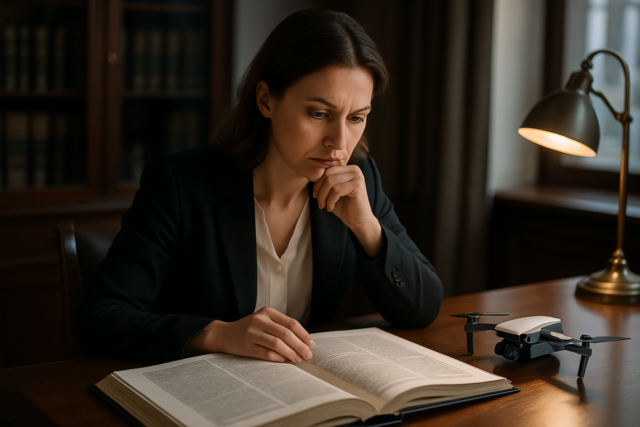The history of drones, or unmanned aerial vehicles (UAVs), is a fascinating journey through innovation, military strategy, and technological advancement. From their humble beginnings as remotely controlled targets in the early 20th century to their sophisticated roles in modern warfare, surveillance, and civilian applications, drones have come a long way. This article explores the key milestones, pioneers, and turning points that have shaped the evolution of these versatile machines.
Early Days: Unmanned Flight Takes Off
The First Unmanned Aircraft
The concept of unmanned flight predates the 20th century. In 1783, French inventors Joseph-Michel and Jacques-Étienne Montgolfier launched the first unmanned hot air balloon. This linen and silk balloon, fueled by a stove burning wool and straw, ascended roughly 6,000 feet and traveled over a mile in 10 minutes, marking the beginning of humanity’s exploration of unmanned flight.
19th-Century Warfare
In July 1849, the Austrian army used unmanned balloons loaded with explosives to attack Venice. This event is considered the earliest recorded use of an unmanned aerial vehicle for warfighting. However, the balloons were mostly ineffective due to changing winds.
The Dawn of Radio Control
The late 19th century saw the development of radio control technology, paving the way for remotely piloted aircraft. In 1898, the first radio-controlled aircraft was developed, though details about this early invention are scarce. In 1903, Spanish engineer Leonardo Torres Quevedo introduced the “Telekino,” a radio-based control system, at the Paris Academy of Science, aiming to test airships without risking human lives.
World War I: The Birth of Military Drones
The “Aerial Target”
The real impetus for drone development came with the outbreak of World War I. Facing the need for pilotless aircraft for military purposes, Archibald Low, a British engineer, developed the “Aerial Target” in 1916. This radio-controlled aircraft was intended to serve as a flying target for training gunners. While not used operationally during the war, it was the first drone to fly under control when tested in March 1917, piloted by Henry Segrave, a future world speed record holder. In France, Max Boucher flew a “Voisin” plane without a pilot over 500 meters at 50 meters altitude on July 2, 1917.
The Kettering Bug
In 1917, the United States also entered the field with the Kettering Aerial Torpedo, or “Bug,” created by Charles F. Kettering. This unmanned aerial torpedo had a maximum speed of approximately 50 mph and a maximum range of approximately 75 miles. Despite mixed results in test flights, the Bug was never used in combat.
The Interwar Period: Refining the Technology
British Innovation
During the interwar period, the development and testing of unmanned aircraft continued. In 1935, Britain produced radio-controlled aircraft for target training. One of these models, the DH.82B Queen Bee, is believed to have inspired the term “drone.” The Queen Bee is considered one of the first modern drones, with 412 being built.
The US Drone Program Starts
The US began its drone program in 1936, developing the “Radioplane,” also called the Curtiss N2C-2, a remote-controlled propeller aircraft used for training anti-aircraft gunners during World War II.
World War II: Mass Production and Combat
The Radioplane OQ-2
Reginald Denny, a Hollywood actor with a passion for radio-controlled aviation, played a crucial role in the mass production of drones during World War II. His company, Radioplane Co., developed the Radioplane OQ-2, which became the first mass-produced UAV in the US. Denny and his partners won an Army contract in 1940 for their radio controlled RP-4, which became the Radioplane OQ-2. The company manufactured nearly fifteen thousand drones for the Army during World War II. The next model, the OQ-3, became the most widely used target drone by U.S. forces, with more than 9,400 built during the war.
Assault Drones
The US Navy developed the Naval Aircraft Factory TDN-1, an early assault drone, in 1942. Though it did not see operational use, it is credited as the first drone to take off from an aircraft carrier. Shortly after, the Interstate TDR-1 assault drone was devised, seeing about a month of deployment in the Pacific Theater before being retired in 1944.
The Interstate TDR was an early unmanned combat aerial vehicle — referred to at the time as an “assault drone” — developed by the Interstate Aircraft and Engineering Corporation during the Second World War for use by the United States Navy. Capable of being armed with bombs or torpedoes, 2000 aircraft were ordered, but only around 200 were built.
Aphrodite and Anvil Operations
The US also experimented with modified B-17 Flying Fortress and B-24 Liberator heavy bombers in Aphrodite and Anvil operations during World War II as very large aerial torpedoes, though with no great success and the loss of aircrew including Joseph P. Kennedy, Jr. These operations involved equipping out-of-service aircraft with radio control.
The GB-1 Glide Bomb
The U.S. found success with one of the earliest combat drones, the GB-1 glide bomb. Also known as the “grapefruit bomb,” the aircraft’s wings allowed it to glide farther than a torpedo, which allowed bombers to release it from outside enemy lines. More than 1,000 GB-1s flew during WWII in 1944 and 1945.
The Cold War: Reconnaissance and Innovation
Target Drone Evolution
After World War II, the focus shifted to using drones as target practice. Modified Grumman Hellcats and Boeing B-17s were used as remote-controlled drones to measure radioactivity in the mushroom cloud that had enveloped Bikini Atoll during nuclear tests.
Reconnaissance Platforms
During the Vietnam War, reconnaissance UAVs were deployed on a large scale. Drones began to be used in new roles, such as acting as decoys in combat, launching missiles against fixed targets, and dropping leaflets for psychological operations.
Key Figures
Edward M. Sorensen’s patents allowed early radio-controlled aircraft to operate beyond the visual sight of the ground pilot, knowing the airplane’s status from a ground terminal, such as climbing, altitude, banking, direction, and rpm.
The Modern Era: Versatility and Accessibility
Abraham Karem: The Father of UAV Technology
Abraham Karem is often credited with inventing the first modern drone. His work in the 1970s and 1980s laid the foundation for modern UAVs. In the United States, he founded his companies, Leading Systems, Inc., and Karem Aircraft. He began developing an unmanned aerial vehicle, and he created a drone prototype called the Albatross.
The Predator Drone
Based on the drone technology developed by Abraham Karem, General Atomics released the MQ-1 Predator in 1996. The Predator has become one of the most iconic military drones, known for its role in reconnaissance and targeted strikes.
Commercial Drones
Advances in computerization, miniaturization, and the invention of GPS combined to make the modern drone – a small, lightweight, accurate, human-controlled aircraft – a reality in the 1990s. In 2013, DJI produced the first Phantom drone, beginning the modern camera-equipped drone craze.
Drones in Law Enforcement
The first drone used by civilian law enforcement agencies was a custom-designed reconnaissance drone called the Spectra, designed by retired US Air Force medic Gene Robinson.
Drones in Australia
The first authorised drone company founded in Australia was Aerosonde – a Melbourne-based business established in 1995.
Current and Future Trends
Today, drones are used in a wide range of applications, including:
- Military: Reconnaissance, targeted strikes, and surveillance
- Law Enforcement: Search and rescue, surveillance, and crime scene investigation
- Commercial: Photography, videography, delivery services, inspections, and agriculture
- Recreational: Hobbyists and enthusiasts
The future of drone technology promises even more advancements, with ongoing developments in:
- AI and Autonomy: Drones that can operate independently and make decisions in real-time
- Battery Life and Endurance: Longer flight times and increased range
- Sensor Technology: More advanced cameras, sensors, and data analytics
- Regulations and Safety: Frameworks to ensure safe and responsible drone operation
Conclusion
From their rudimentary origins as unmanned balloons and radio-controlled targets, drones have evolved into sophisticated and versatile machines that play a significant role in various aspects of modern life. The history of drones is a testament to human ingenuity and the relentless pursuit of innovation, and their future promises even more exciting possibilities.





